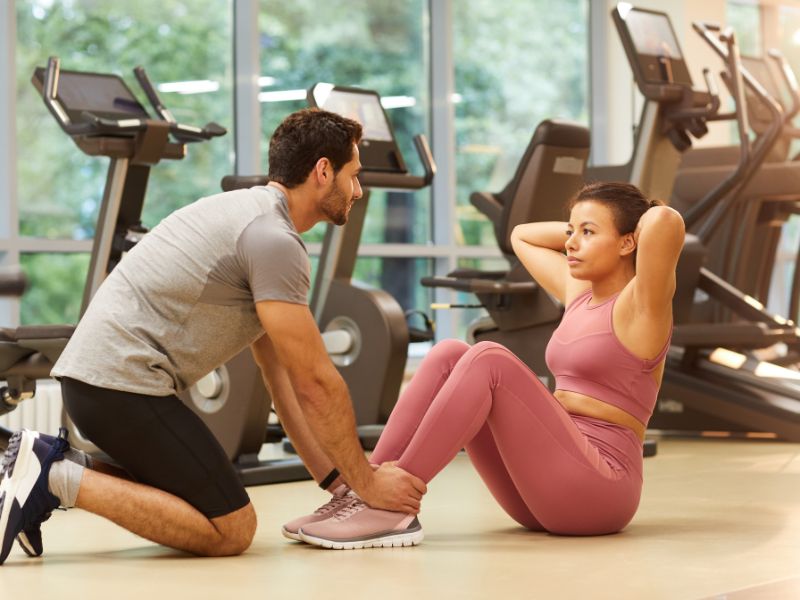Kidney stones can be a painful experience, and after treatment, many people wonder when it’s safe to return to their regular routines, especially physical activities like going to the gym. While staying active is important for overall health, it’s crucial to understand how and when to safely resume your workout routine after kidney stone treatment. This blog will help answer the common question: Is gymming after kidney stone treatment good or bad?
1. Understanding Kidney Stone Treatment and Recovery
Kidney stone treatment can vary depending on the size and location of the stones. Common treatments include shock wave lithotripsy (SWL), where sound waves break the stones into smaller pieces, and ureteroscopy, where a small scope is inserted into the urethra to remove or break up stones. Medication may also be prescribed to help pass the stone naturally.
Recovery time depends on the treatment method used. After a procedure like lithotripsy or ureteroscopy, you may experience some discomfort, blood in your urine, or the need to rest for a few days. A full recovery may take anywhere from a few days to a few weeks. Following your doctor’s advice during this period is essential for proper healing.
2. The Impact of Physical Activity on Recovery
Physical activity plays a significant role in maintaining health, but it can also impact your recovery after kidney stone treatment. Intense workouts can put strain on your body, particularly the kidneys, which are still healing after treatment. Exercises that involve heavy lifting or vigorous movements might delay recovery or even cause discomfort.
Your body needs time to heal, and over-exertion can increase the risk of complications, such as bleeding or recurring pain. Light physical activity, however, can help improve blood circulation, speed up recovery, and prevent future stone formation. It’s about finding the right balance between rest and gentle activity.
3. When Can You Safely Return to the Gym?
The timeline for returning to the gym varies based on the type of treatment you underwent. After non-invasive procedures like shock wave lithotripsy, you might be able to return to light exercise after a few days, as long as you feel comfortable and don’t experience pain. For more invasive treatments like ureteroscopy, it’s often recommended to wait at least a week or more before resuming physical activity.
Pay attention to your body—if you experience any pain or discomfort, it’s a sign that your body isn’t ready for intense exercise yet. Start with light activities and gradually increase intensity as you recover. Always follow your doctor’s advice on when it’s safe to resume gymming.
4. Types of Exercises to Avoid After Kidney Stone Treatment
Certain exercises should be avoided immediately after kidney stone treatment. Heavy lifting, such as weightlifting or resistance training, can put unnecessary strain on your abdominal area and kidneys, potentially leading to pain or slower recovery. High-intensity cardio workouts, like running or spinning, can also be too demanding during the initial healing phase. Abdominal exercises like crunches, squats, or sit-ups should be avoided as they can put pressure on the kidneys. During the early stages of recovery, it’s best to steer clear of these high-impact activities until your body is fully healed.
5. Safe Exercises to Help You Stay Active Post-Treatment
Staying active after kidney stone treatment is important, but it’s essential to choose the right kind of exercise. Walking is an excellent way to maintain movement without putting too much strain on your body. Swimming is another low-impact activity that can improve circulation, strengthen muscles, and promote overall well-being without stressing the kidneys.
Yoga and gentle stretching exercises can help keep your body flexible and relaxed while enhancing recovery. These activities can also prevent the recurrence of kidney stones by encouraging regular fluid intake and keeping your system active. As you recover, you can gradually increase the intensity of your workouts based on how you feel.
6. Hydration and Its Importance During Post-Recovery Gymming
Hydration is key to both recovery and preventing future kidney stones. When you exercise, you lose fluids through sweat, which can make you more prone to dehydration. Dehydration is one of the leading causes of kidney stones, so it's important to drink plenty of water before, during, and after your workout.
Aim to drink at least 8-10 glasses of water a day, and more if you’re working out. Staying hydrated helps flush out toxins and prevent new stones from forming. It’s also helpful to monitor the color of your urine—clear or light yellow indicates you’re properly hydrated, while darker urine suggests you need more fluids.
7. Consulting Your Doctor Before Returning to the Gym
Before jumping back into your gym routine, it’s crucial to consult your doctor. They will assess your specific situation, including the type of treatment you underwent, the size and number of stones, and any complications during your recovery. If your doctor advises against gymming for a certain period, follow their recommendations to avoid unnecessary risks.
Additionally, if you experience recurring pain, blood in your urine, or other concerning symptoms after resuming your workout, stop immediately and seek medical advice. A personalized recovery plan from your doctor will ensure you stay safe and heal properly.
Conclusion
Gymming after kidney stone treatment can be beneficial for your overall health, but it’s essential to take it slow and follow medical advice. While it’s tempting to jump back into your regular routine, easing into exercise will give your body the time it needs to heal. Safe, low-impact activities like walking and swimming can help you stay active without putting a strain on your recovering kidneys. If you are looking for kidney stone removal in Bangalore , book an appointment with us to get rid of the stones effectively and rejoin your gym sessions.

